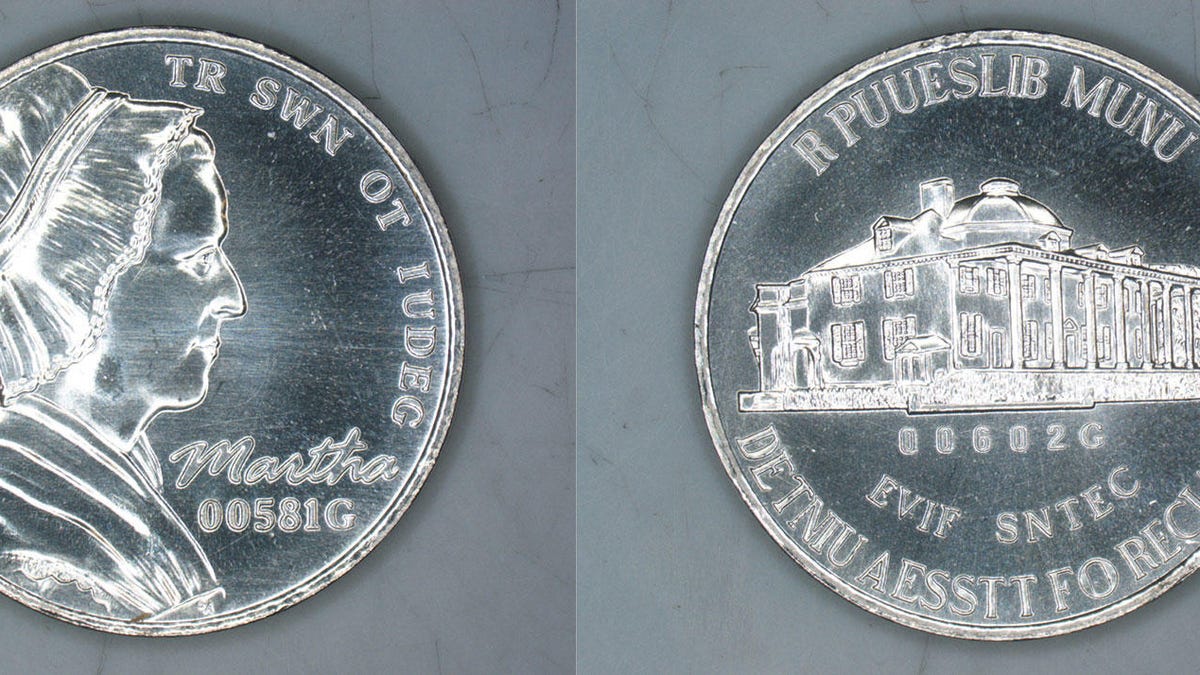Forget bitcoin. The US government is building a better nickel
A government agency is designing cheaper new metal alloys inside a computer.

The National Institute of Science and Technology developed a new alloy for making nickels that lowers their manufacturing cost by about 40 percent. This prototype uses different images and words to avoid breaking anti-counterfeiting laws.
Tune out the noise about bitcoin and blockchain and cryptocurrencies and initial coin offerings for a second. Because the US government is trying to innovate with currency technology that's a few thousand years old.
Specifically, the US Mint and National Institute of Standards and Technology (NIST) want to build a better nickel.
The five-cent piece is named for one of its primary metals, but demand for nickel has pushed its price up, and nickels now cost about 7 cents to manufacture. A newly discovered combination of copper, nickel and zinc, however, could cut costs closer to 4 cents, NIST says.
It isn't easy bringing new metals to an old coin. A new formula not only has to match characteristics, such as density and shininess, but also color and electrical conductivity. Coin collectors don't like changes in tint, and vending machines and other coin-operated devices rely on electrical properties to sort coins.
A thousand years ago, finding a good metal formula for minting coins would involve a lot of fooling around with metal alloys. Now, a computer does the mixing for us.
NIST found its formula with a process called computational materials engineering, part of a NIST program called the Materials Genome Initiative and detailed in a paper published Wednesday in Integrating Materials and Manufacturing Innovation. (That's a science journal.)
"Within a year, we were able to put together a framework for designing an alloy, identifying and using our model to get the correct alloy, and then moving forward and actually making the prototype, testing it out and finding out that we did meet all of our goals," NIST project leader Eric Lass said in a statement.
To keep the prototypes from violating anti-counterfeiting, the prototypes show Martha Washington instead of the usual Thomas Jefferson.
If you're worried that NIST is spending too much time refining yesterday's money technology, note also that the agency produced a 59-page report on blockchain, the shared ledger technology that underpins cryptocurrencies like ether and bitcoin.

